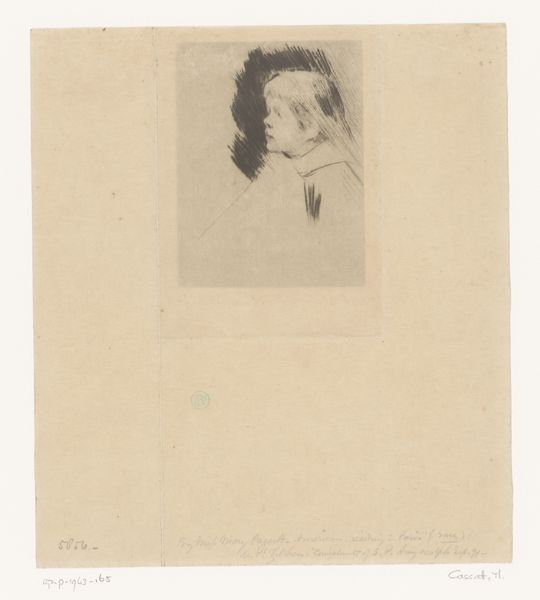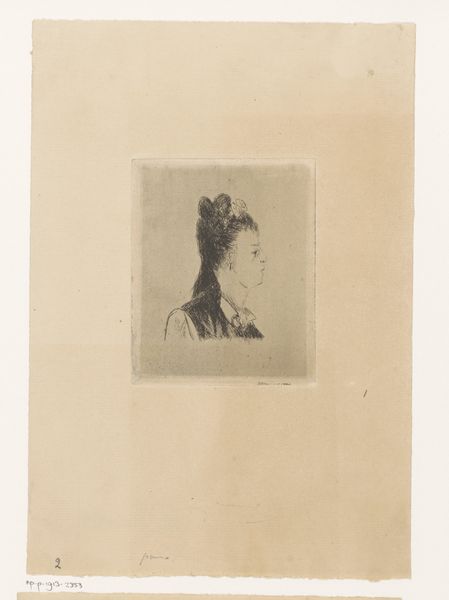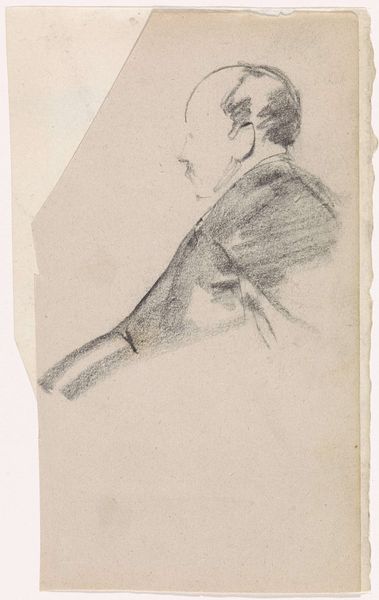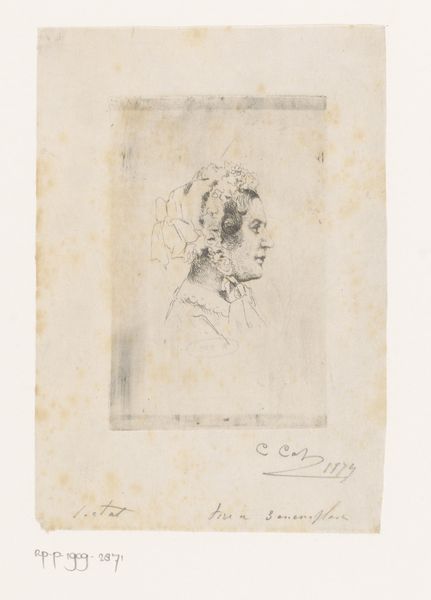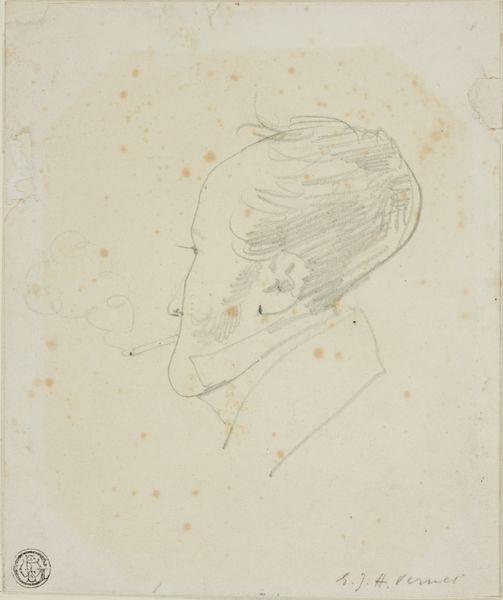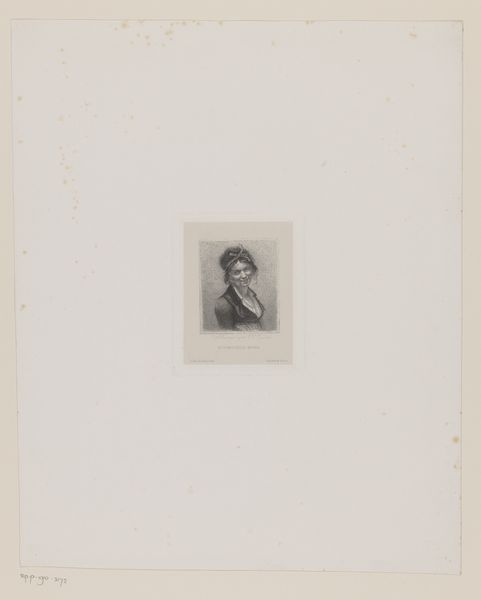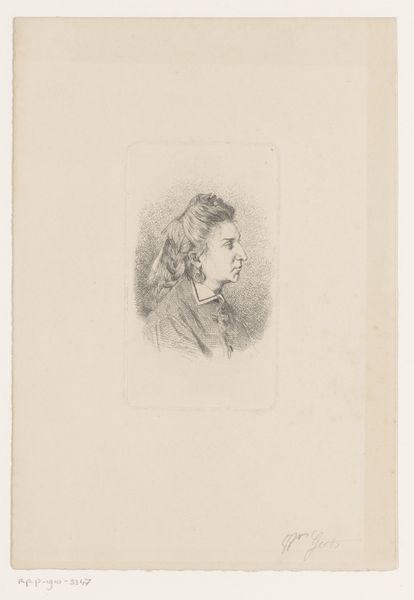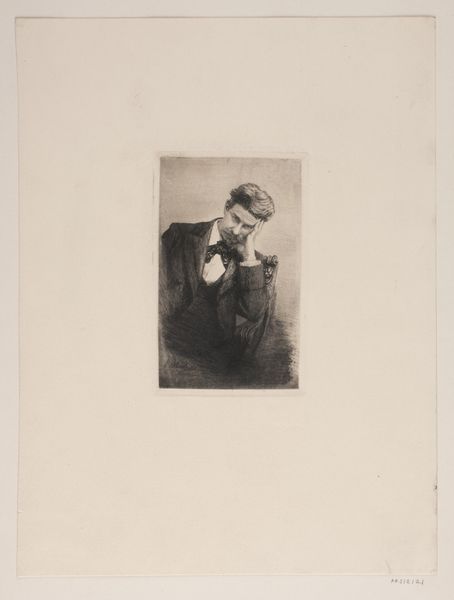
drawing, paper, pencil
#
portrait
#
drawing
#
pencil sketch
#
figuration
#
paper
#
personal sketchbook
#
pencil
#
expressionism
#
sketchbook drawing
Dimensions: height 160 mm, width 100 mm
Copyright: Rijks Museum: Open Domain
Curator: The unsettling image before us is "Man," a pencil drawing on paper created by Erich Wichmann in 1923. Editor: It has this haunting quality...a fragility in the linework that's immediately arresting. There is a rawness to it. It's very evocative, but melancholy. Curator: Absolutely. Wichmann’s style is demonstrably Expressionist. Look at the exaggerated, almost caricature-like, elongation of the figure and the stark contrasts achieved through subtle shading techniques with the pencil. It verges on the grotesque, doesn’t it? Editor: It does, but there's also this vulnerability that softens the grotesque edge. That high collar encircling the thin neck reminds me of the protective amulets worn in antiquity—as though he's shielding himself from an unseen force. The slumped posture reads as an internal withdrawal, or some form of existential contemplation. Curator: That protective symbolism is interesting. Formally, the use of negative space around the figure amplifies the subject’s isolation and contributes to this pervasive sense of unease that you rightly note. The inscriptions at the bottom – the Dutch handwriting – would possibly unlock further interpretative possibilities about the circumstances under which this artwork has been sketched. Editor: Yes! These notes situate him within a narrative, hinting at a deeper symbolic reading about what he could be ‘forgetting’. He has also placed his initials "W" before '23 on the paper too - what is that alluding to in connection to that fateful year in history? Curator: The ambiguity surrounding it, its lack of refinement, makes it all the more powerful as a means for individual contemplation. Editor: It really does invite introspection; even if disturbing, "Man" serves as a haunting reminder of our own vulnerabilities.
Comments
No comments
Be the first to comment and join the conversation on the ultimate creative platform.
